

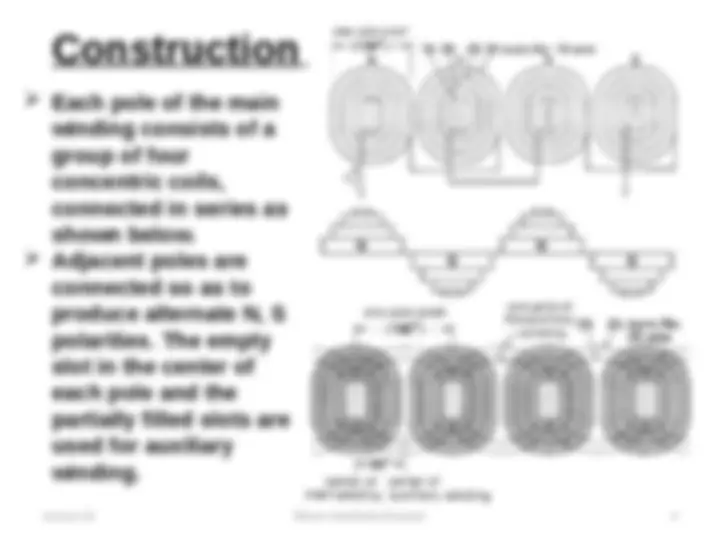
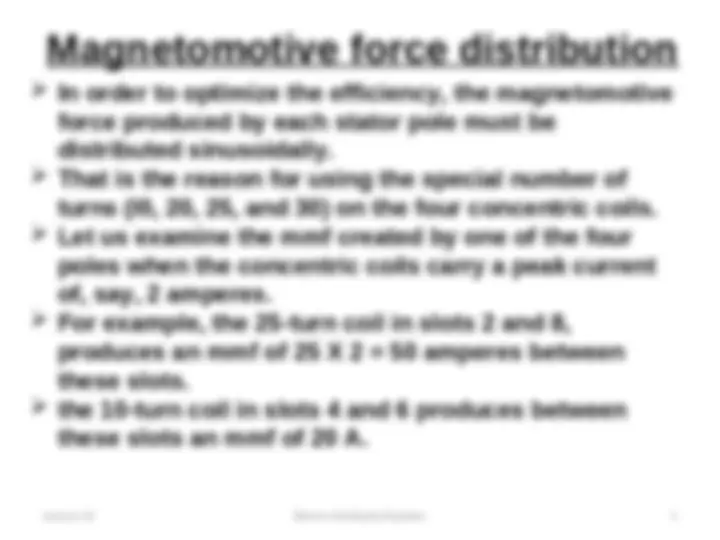
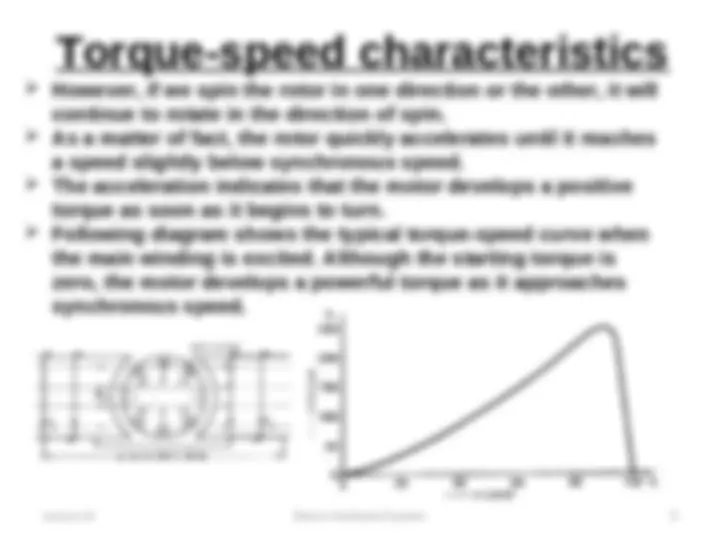
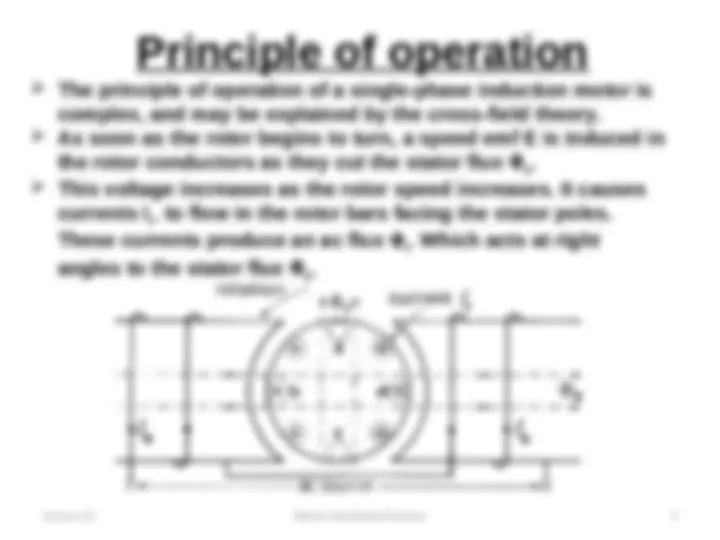
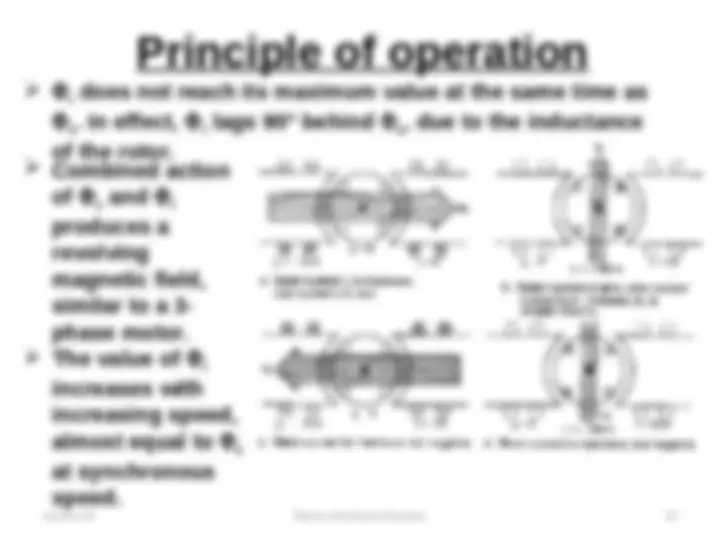
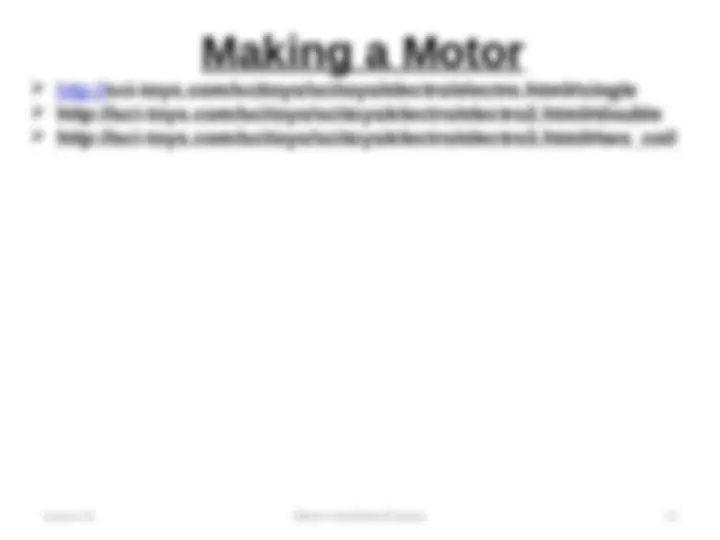


Study with the several resources on Docsity

Earn points by helping other students or get them with a premium plan


Prepare for your exams
Study with the several resources on Docsity

Earn points to download
Earn points by helping other students or get them with a premium plan
Community
Ask the community for help and clear up your study doubts
Discover the best universities in your country according to Docsity users
Free resources
Download our free guides on studying techniques, anxiety management strategies, and thesis advice from Docsity tutors
cascascsacascascascascascascascacascasc
Typology: Summaries
1 / 13

This page cannot be seen from the preview
Don't miss anything!








Construction
Magnetomotive force distribution (^) In order to optimize the efficiency, the magnetomotive force produced by each stator pole must be distributed sinusoidally. (^) That is the reason for using the special number of turns (l0, 20, 25, and 30) on the four concentric coils. (^) Let us examine the mmf created by one of the four poles when the concentric coils carry a peak current of, say, 2 amperes. (^) For example, the 25-turn coil in slots 2 and 8, produces an mmf of 25 X 2 = 50 amperes between these slots. (^) the 10-turn coil in slots 4 and 6 produces between these slots an mmf of 20 A.
Torque-speed characteristics (^) Suppose the rotor is locked in a 2-pole single-phase induction motor. If an ac voltage is applied to the stator. (^) The resulting current I s produces an ac flux^ s. The flux alternates back and forth but, unlike the flux in a 3-phase stator, no revolving field is produced. (^) The flux induces an ac voltage in the stationary rotor which, in turn, creates large ac rotor currents. (^) In effect, the rotor behaves like the short-circuited secondary of a transformer; consequently, the motor has no tendency to start by itself.
Torque-speed characteristics (^) However, if we spin the rotor in one direction or the other, it will continue to rotate in the direction of spin. (^) As a matter of fact, the rotor quickly accelerates until it reaches a speed slightly below synchronous speed. (^) The acceleration indicates that the motor develops a positive torque as soon as it begins to turn. (^) Following diagram shows the typical torque-speed curve when the main winding is excited. Although the starting torque is zero, the motor develops a powerful torque as it approaches synchronous speed.
Principle of operation
r
Principle of operation
r
s
Making a Motor (^) http://sci-toys.com/scitoys/scitoys/electro/electro.html#single (^) http://sci-toys.com/scitoys/scitoys/electro/electro2.html#double (^) http://sci-toys.com/scitoys/scitoys/electro/electro3.html#two_coil